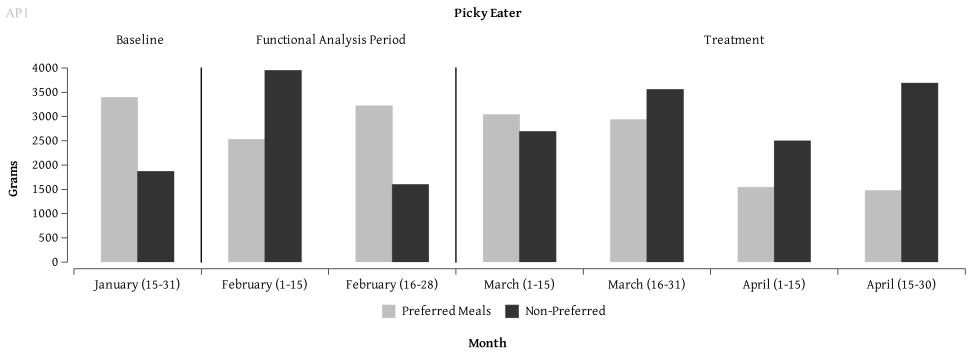Picky Eaters
Why does my child have to be so picky?
Many parents share similar stories about their children being picky eaters. That their child cannot or will not eat specific foods. For most, it was not always like that, and in their early stages of life, they ate just about anything placed in front of them.
Now, those picky eaters are fixated on eating only specific types of foods such as pizza, McDonald’s, or potato chips (e.g., junk foods) as their main source of caloric intake. When given an alternative, some will spit it out or flat out refuse to take a bite to even try it.
But why? Some parents have tried everything they could think of and nothing worked. Other parents have gone to professionals including ABA providers and got nowhere. Yet multiple studies across disciplines have claimed amazing results when dealing with picky eaters. The question then is what was so different about the participants in those studies and the parents agreeing to therapeutic interventions?
Simple, some parents who participate in a study are desperate to get some kind of help for their child and are willing to go above and beyond for their child regardless of whatever obstacles are currently present.
This is why the team of Core Behavior Skills put major emphasis on parental participation. From the very beginning, expectations are made clear to parents, which also includes implementing the program. Success often depends on parents’ ability, to be honest, open, and implement the program to the best of their ability. If parents waiver or lie about any challenges, difficulties, or the data itself, it would be a failure on their behalf to help their child succeed.
It is normal to experience challenges and difficulties along the way. Changing problem behaviors can be exhausting at times. But being honest and open can create a more comprehensive understanding of the problems at hand. This is a typical expectation that Core Behavior Skills places on all caregivers.
Figure 1: Preferred meals (junk food) vs non-preferred meals (healthy food) that a particular child ate over time.

Figure 1 above shows an actual case study of a picky eater that our team has encountered. From the very beginning, the child highly preferred a series of junk foods. This is shown on the left in January The parents were concerned that their child was not getting a balanced diet. If you look from left to right in Figure 1 you can see that over time the child became more willing to eat more of the Non-preferred meals (healthy food). With collaboration from the family’s primary care provider and the family, the desired goals of behavior change were achieved.
If your child is a picky eater, call us at 813-534-0462 or email us at info@corebehaviorskills.com to receive more information on how we can help you.
